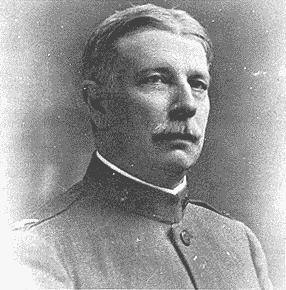An Outstanding Military Career
He graduated from West Point in 1883, and became the youngest Colonel in the U.S. Army. He was Chief Ordnance Officer for General Shafter’s Expeditionary Forces in the Spanish American War. It was there that he realized the necessity for increasing the firepower of the soldier, and began his quest for a more efficient small arms weapon.
Appointed Chief of the Small Arms Division of the Army Ordnance Department, he supervised the development of the M1903 Springfield Rifle, considered for many years to be the perfect rifle for military use.
Early in his new capacity, General Thompson believed that the only available means of equipping the greatly expanding armies of the United States with small arms was to adapt the caliber .303 Enfield to the caliber .30 cartridge manufactured in the United States. This would utilize existing manufacturing facilities for the continued production of both Springfield and Enfield rifles.
When World War I broke out in Europe in 1914, it became obvious that the production of military small arms on a large scale in the U.S. would become necessary. Col. Thompson resigned from the Army to enter this field, and was appointed Chief Engineer of the Remington Arms Co. While serving in this capacity he designed and build the Eddystone Plant at Chester, Pennsylvania, which at the time was the largest small arms plant in the world. Under his supervision, this plant manufactured great numbers of Enfield rifles for the British, and “Three-Line” (7.62x54R caliber) Moisin-Nagant rifles for Russia.
Upon the entry of the United States into the war in 1917, he re-entered the Service, reaching the rank of Brigadier General and as Director of Arsenals was placed in charge of all small arms production.
For his achievements he was awarded the Distinguished Service Medal by Congress.
By Tracie L. Hill


